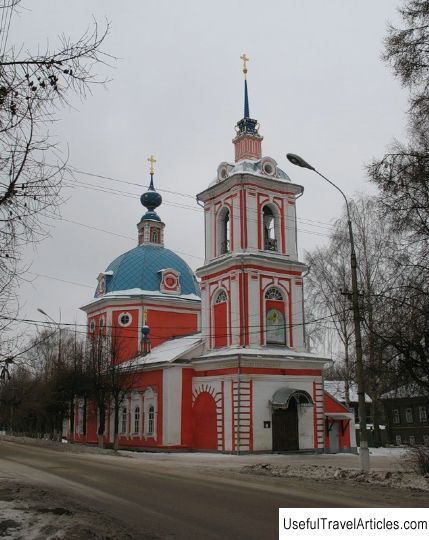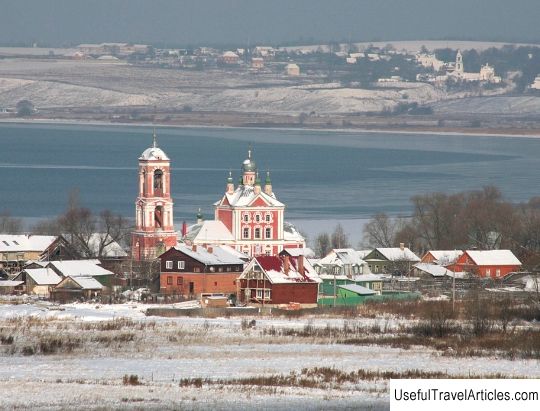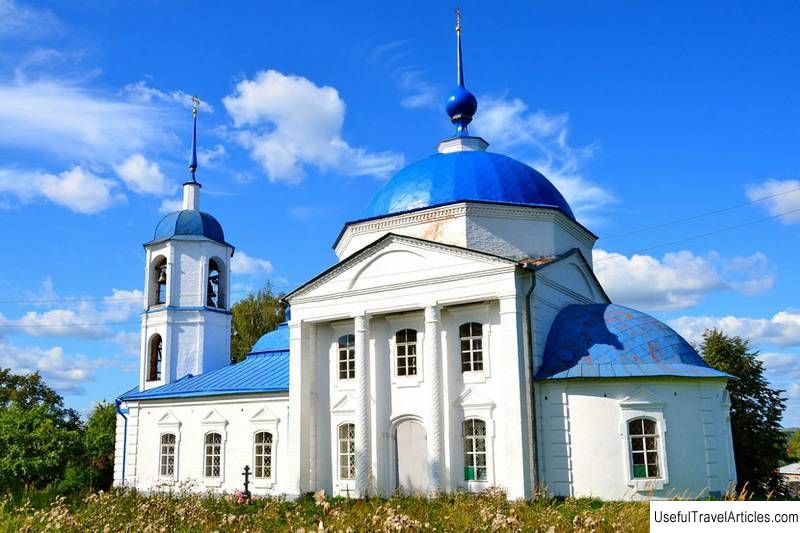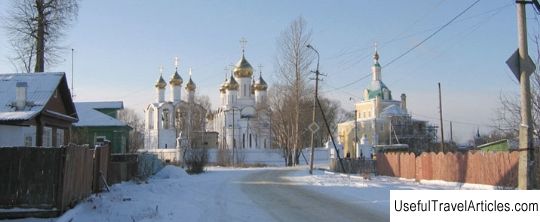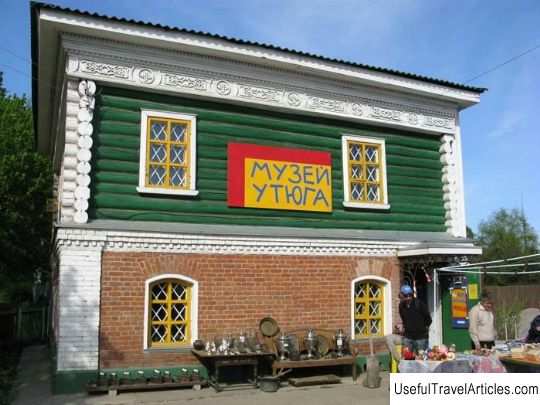Simeonovskaya church description and photo - Russia - Golden Ring: Pereslavl-Zalessky
Rating: 8,7/10 (1293 votes) 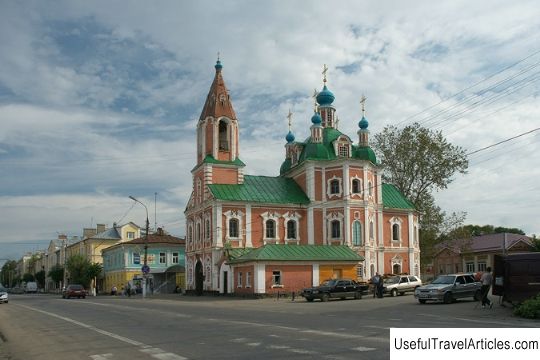
Simeon Church description and photos - Russia - Golden Ring: Pereslavl-Zalessky. Detailed information about the attraction. Description, photos and a map showing the nearest significant objects. Photo and descriptionThe Church of Simeon the Stylite is located in the center of Pereslavl-Zalessky, on Rostovskaya street. This church was built in 1771. The architectural style of this temple is provincial baroque. The church is two-storied with a hipped-roof bell tower. On the first floor there is a warm winter church, on the second - a summer church. Next to the temple there is a one-storey gatehouse connected by an arch of the gate with the temple. The elongated dome is crowned with five chapters with openwork crosses, located on graceful thin drums. Small domes fit under the side heads, as if "growing" from the main dome. On the four sides of the dome, there are openings for light - lucarnes. The tent of the bell tower is rather low, it has dormer windows in one row. It can be seen first from the street, and only when you approach the temple, you can see it in full. Particular attention in the Simeonovskaya church is attracted by its magnificent decor in the form of luxurious window frames, different in each tier. The most decorated are the windows on the second floor, despite the fact that the third row of window openings is also quite luxuriously decorated. In addition to window frames, the decor of the temple is represented by all kinds of pilasters, belts between floors, thin cornices, which stand out clearly against the background of red-painted brick walls. Until 1929, the temple functioned. His parish numbered over 100 people. The Simeon Church shared the fate of most of the Orthodox churches in Russia at that time. In February 1922, the famine in the Crimea and the Volga region was the reason for the surrender of church values to the state. With the money received from their sale, the government intended to supply the starving with food. The local population initially reacted negatively to the confiscation of valuables from the church, so the Pereslavl Commission for the seizure of church valuables was forced to reckon with their opinion. The commission took away twelve silver objects from the church: crosses of the 18th century, salaries from the gospels, a censer, a tabernacle of 1788, chalices and vestments from icons. They wanted to send these items to the Uyezd Finance Department. But there was one problem with that. M.I. Smirnov, who was the director of the museum, had mandates to select and keep items of historical and artistic value in the museum. Therefore, half of the valuables confiscated from the church were not melted down or sold abroad, they have been preserved in the museum to this day. At the beginning of 1929 the clergy was declared a political enemy of the party, which is carrying out tasks to prepare a counteroffensive against Soviet power. The newspapers published publications on anti-religious topics, from which it was clear that the spring and summer holidays celebrated by the church disrupt agricultural work, and the bell ringing does not allow listening to radio broadcasts. The Pereslavl-Zalessky Liaison Office in July 1929 at a meeting of the Presidium of the City Council submitted a petition on the need to take urgent measures to close the Simenovskaya Church, as the bell ringing interfering with the work of the Branch. After an appropriate check, a year later, they began to remove the monastery bells, and somewhat later the church bells. During the removal of the bells from the bell tower of the Simeon Church, part of the wall was broken in the northern and western window openings. In the early 1930s. in the temple the iconostases were dismantled. The museum staff managed to take out wooden carved sculptures from the church to the museum. At this time, the temple was already closed. When a decision was made on the future fate of the church, it was decided that it was similar to the Moscow Sukharev tower and had architectural significance. For a certain time, the Simeon Church was on the list of architectural monuments. But at the same time it was not empty. In the early 1930s. the builders' club was located here. Then the temple was rented out to the Pereslavl auction: the Red Corner was located on the top floor, and a warehouse of goods was located below. In the 1980s. the building housed the National Theater. In 1992, the church of Simeon the Stylite was returned to Orthodox believers and it began to function again. Again the ringing from her bell tower began to echo around. You can say that this church was lucky - like many others (Dukhovskaya, Sergievskaya, Varvarinskaya, etc.), it was not blown up. And today it is a decoration of the city.           We also recommend reading Jakarta Cathedral description and photos - Indonesia: Jakarta Topic: Simeonovskaya church description and photo - Russia - Golden Ring: Pereslavl-Zalessky. |
